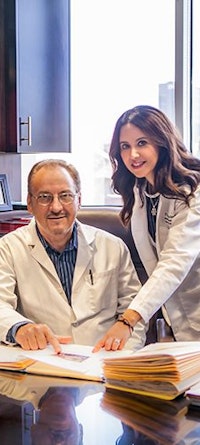Fresh vs. Frozen Embryo Transfer
 In vitro fertilization, or IVF, can help those who have struggled to conceive realize their dreams of growing their family. At the Center for Fertility and Gynecology, our fertility specialists, Dr. Michael Vermesh and Dr. Vuk Jovanovic, are often asked questions about IVF and the different techniques for embryo transfer. Today, we answer some of these questions as we take a closer look at fresh vs. frozen embryo transfer. If you live in or around Los Angeles, CA and would like more information about IVF, please contact our fertility center to learn more.
In vitro fertilization, or IVF, can help those who have struggled to conceive realize their dreams of growing their family. At the Center for Fertility and Gynecology, our fertility specialists, Dr. Michael Vermesh and Dr. Vuk Jovanovic, are often asked questions about IVF and the different techniques for embryo transfer. Today, we answer some of these questions as we take a closer look at fresh vs. frozen embryo transfer. If you live in or around Los Angeles, CA and would like more information about IVF, please contact our fertility center to learn more.
About In Vitro Fertilization and Embryo Transfer
In vitro fertilization is an assisted reproductive technology (ART) in which eggs are harvested from a woman's body and fertilized with sperm from her partner or a donor in a lab. Fertilized eggs are placed in a special culture and incubator to facilitate growth. Once the fertilized eggs, or embryos, reach a suitable level of maturity, one or more may be transferred into the woman's uterus, called embryo transfer, or frozen for use at a future date.
When frozen embryos are transferred into a woman's uterus, it is referred to as frozen embryo transfer, or FET. Success rates of frozen embryo transfer versus fresh embryo transfer for women under 35 are similar.
What Is Fresh Embryo Transfer?
When fresh embryo transfer is used during IVF treatment, one or more embryos from a current IVF cycle are transferred into the uterus once they have sufficiently matured. Fresh embryos are typically transferred three or five days after egg retrieval.
The Benefits and Disadvantages of Fresh Embryo Transfer
Fresh embryo transfers have a long history of success because they have been used for decades in IVF treatment, making them a favored choice among women undergoing IVF treatment.
Fresh embryo transfer offers the benefit of potentially less hormone injections, specifically if embryo transfer is successful on the first try and no further IVF attempts are planned. This is a benefit as fertility medications carry some side effects and can be costly.
What Is Frozen Embryo Transfer?
With frozen embryo transfer, or FET, embryos have previously been frozen and preserved until the woman is ready to try to conceive. At this time, one or more frozen embryos will be placed in the uterus.
The Benefits and Disadvantages of Frozen Embryo Transfer
Frozen embryo transfer doesn't require women to go through the complete IVF process again since the embryos are ready. This means no medications for ovarian stimulation and no need for egg retrieval.
Some medications are necessary when undergoing FET. These medications include estrogen and progesterone to help prepare the uterine lining for embryo transfer. Fortunately, these medications have fewer side effects than medications needed for ovarian stimulation and they are far less expensive.
Because freezing the embryos keeps them from aging, success rates using FET are similar to transferring fresh embryos. Additionally, the date of frozen embryo transfer can be decided at anytime, allowing families to plan when pregnancy may be best for them.
Find out More about Fertility Treatment
If you would like to know more about fertility treatment options, or discuss which treatment may be right for you, we invite you to schedule a consultation with our fertility specialists.







